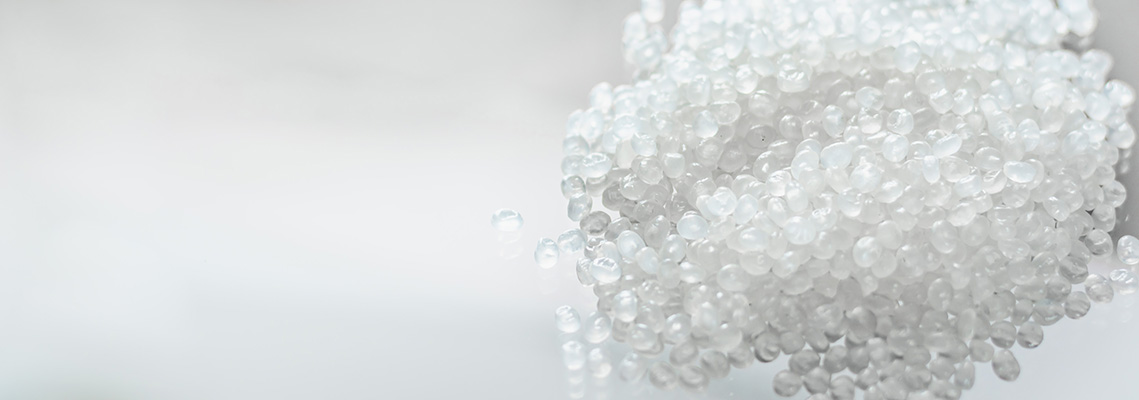PVC – polyvinylchloride

Physical and Mechanical Properties
At 1.14-1.56 g/cm³, soft PVC is a relatively heavy amorphous thermoplastic, due to its halogen component (Cl). Depending on the plasticiser used, there are soft-rubber-like compounds of 40 Shore A (Shore A = hardness determination for soft plastics) to hard-rubber-like compounds of 98 Shore A. The latter corresponds roughly to the transition range from LD-PE to HD-PE. Compared to soft rubber, vibration damping and creep tendency are greater. The high damping and the associated re-deformation are well suited to absorbing shocks and vibrations. PVC absorbs water only slightly. Soft PVC is very tough and resistant to expansion cracking.
Optical and Chemical Properties
The chemical resistance of flexible PVC must be lower than that of non-soft PVC (PVC=rigid PVC) in terms of the type and proportion of plasticiser components. Moulded parts made of soft PVC may only come into contact with painted or coated components during assembly or use that do not cause plasticiser migration. The same applies to the presence of plasticiser solvents. The raw material PVC itself is resistant to petrol, oil, diluted alkalis and acids, as well as salt solutions of all kinds. PVC is not resistant to organic solvents such as alcohols, ethers, ketones, aromatic hydrocarbons, chlorinated hydrocarbons, strong alkalis and acids. Moulded parts made of natural-coloured soft PVC are tinted to be crystal-clear and transparent. After production, the material has a minimal yellow tinge, which is “tinted” by a slight bluing. This can be noticeable on the narrow sides of thicker-walled mouldings due to light refraction. Soft PVC moulded parts with appropriately designed injection moulds have a very good glossy surface.
Resistance to weather and ageing
The light, weather and ageing resistance of flexible PVC is good and can be further improved by suitable colouring. Black colouring with carbon black gives excellent UV resistance and lowers the heat ageing resistance.
Special settings – product areas
Conductive fillers for adjusting electrical conduction, various stabilisers – cable grommets, elastic feet, suction pads, door buffers, caps, plugs, shock-absorbing elements, glass plate buffers, adhesive elements.
Thermal properties
The continuous service temperature of soft PVC without mechanical stress is -25 to max. 80°C depending on the moulded part wall thickness and the plasticiser content. With harder settings, the range shifts somewhat towards higher temperatures. The raw material PVC is flame retardant due to its halogen component (Cl). The type and proportion of plasticisers determine the fire behaviour and the substances that are released in the process.
Physiological and joining behaviour
The plasticisers of the flexible PVC can migrate depending on the contact material. Special plasticisers must be used for food contact. Plasticised PVC can be bonded with polycarbonate (PC) and THF solvent adhesives, polyurethane (PUR) and polyester two-component adhesives, polychlorobutadiene and with vinyl polymers.
Example of use
Manufacture of floor coverings, seals, hoses, artificial leather, wallpaper, roofing membranes, etc.
Take a look in our range under the heading “Diverse small parts” at the article series S, GS, GAH, FBP, GF, PT